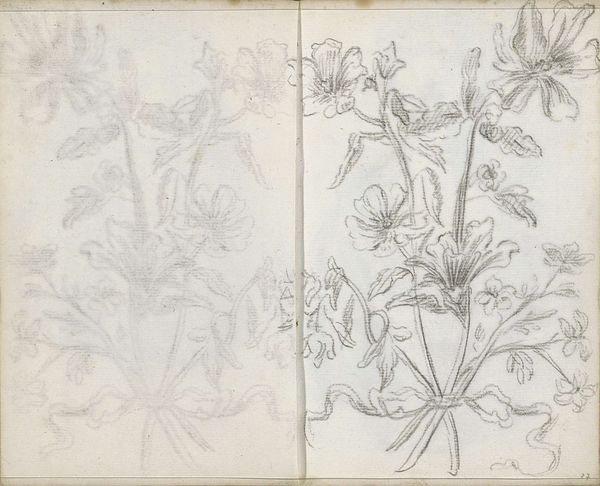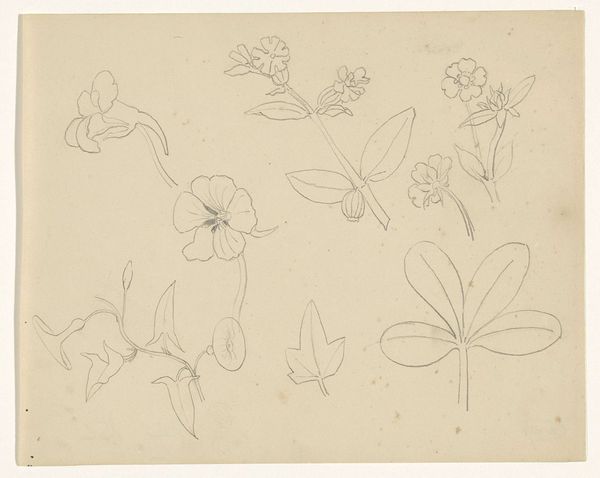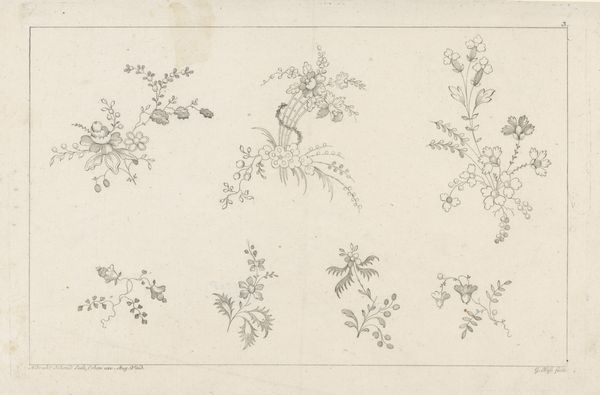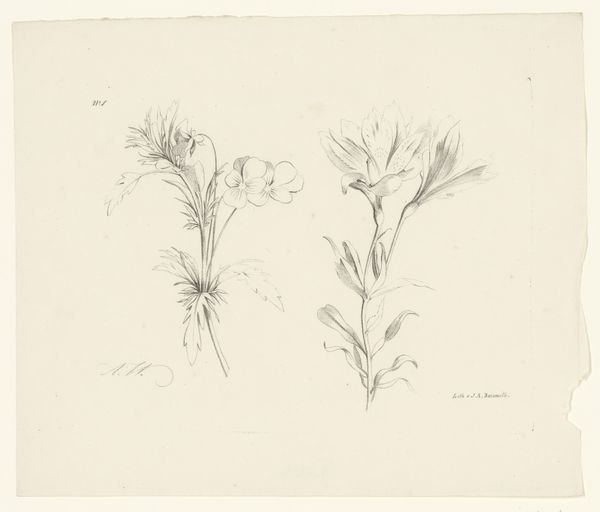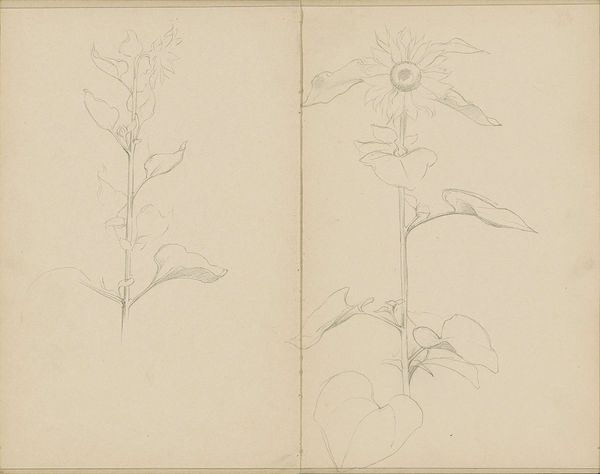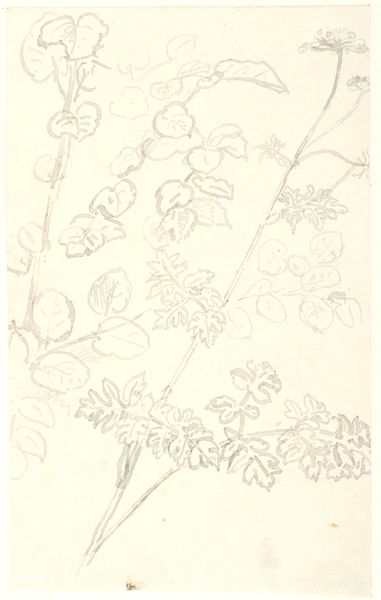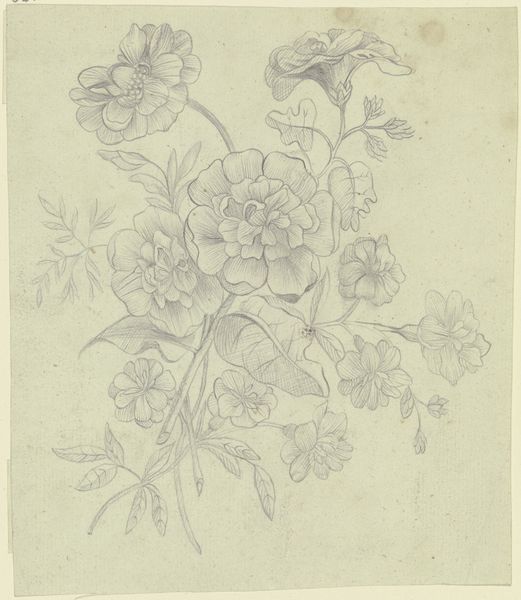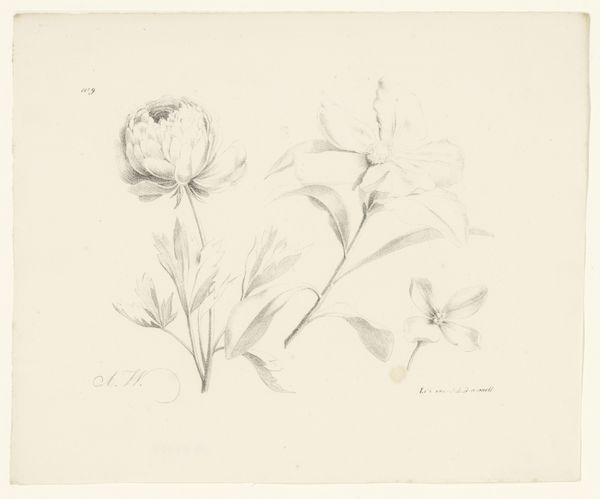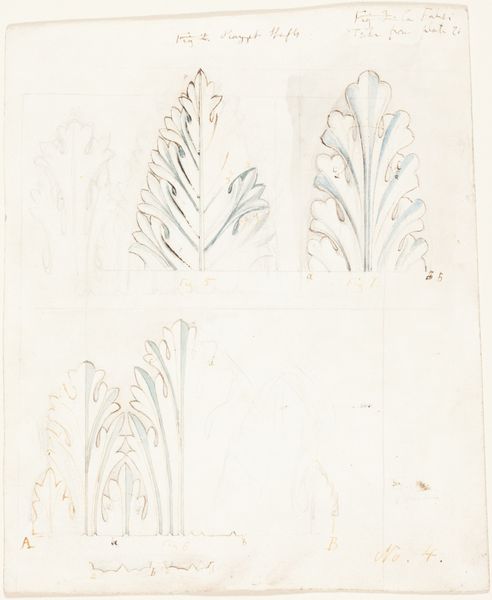
drawing, paper, pencil
#
drawing
#
landscape
#
paper
#
pencil
#
realism
Dimensions: 207 mm (height) x 132 mm (width) (bladmaal)
Editor: This is "Blomster og bladstudier," a pencil and paper drawing from 1866 by Lorenz Frølich. It looks like a study of different plants. It feels quite delicate and immediate. What strikes you most about this piece? Curator: The immediacy you mentioned is key. Pencil on paper, seemingly a simple choice, speaks volumes about accessibility and the means of artistic production at the time. It wasn't about elaborate techniques, but about capturing the natural world directly and efficiently. This also places "high art," as it were, as secondary to scientific record-keeping. Editor: So, you’re focusing on the practical aspects of the materials? How does that inform the way we should interpret the art? Curator: Precisely. Think about the social context. 1866. Industrialization is changing everything, including the way we perceive nature. Artists, and society generally, were deeply engaged with categorizing the world through material investigation. Studies like this aren't just pretty; they are part of a process of understanding and owning the natural world through documentation and reproduction. Why study something, or draw it, otherwise? It's labor, too, of course - consider the repetitive and precise labor of drawing each leaf or petal. What class of people could produce such things? How do we view them now? Editor: That's a perspective I hadn't considered! So, instead of seeing just a drawing of plants, we see evidence of artistic labor intertwined with broader social and historical currents? Curator: Exactly. The materiality is key. Pencil, paper, and the hand of the artist connect this delicate drawing to wider themes of labor, industrialization, and humanity's shifting relationship with nature. Editor: It's amazing how a seemingly simple study can reveal so much about the artist's context and the larger world. Thank you. Curator: Indeed. And hopefully, a material lens empowers us to appreciate beyond the immediately obvious and consider how these things were made and, by whom.
Comments
No comments
Be the first to comment and join the conversation on the ultimate creative platform.

